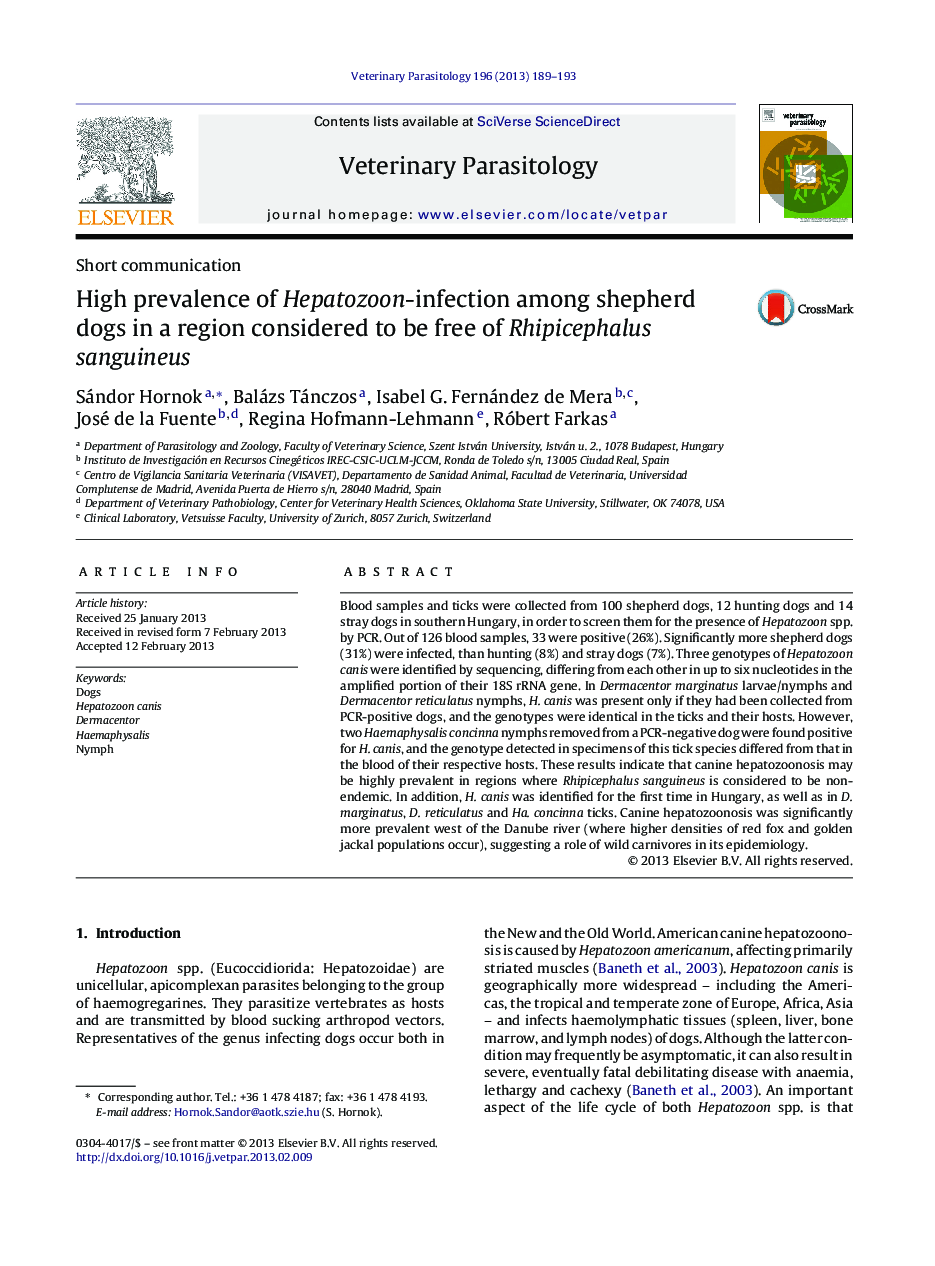| Article ID | Journal | Published Year | Pages | File Type |
|---|---|---|---|---|
| 5803773 | Veterinary Parasitology | 2013 | 5 Pages |
Blood samples and ticks were collected from 100 shepherd dogs, 12 hunting dogs and 14 stray dogs in southern Hungary, in order to screen them for the presence of Hepatozoon spp. by PCR. Out of 126 blood samples, 33 were positive (26%). Significantly more shepherd dogs (31%) were infected, than hunting (8%) and stray dogs (7%). Three genotypes of Hepatozoon canis were identified by sequencing, differing from each other in up to six nucleotides in the amplified portion of their 18S rRNA gene. In Dermacentor marginatus larvae/nymphs and Dermacentor reticulatus nymphs, H. canis was present only if they had been collected from PCR-positive dogs, and the genotypes were identical in the ticks and their hosts. However, two Haemaphysalis concinna nymphs removed from a PCR-negative dog were found positive for H. canis, and the genotype detected in specimens of this tick species differed from that in the blood of their respective hosts. These results indicate that canine hepatozoonosis may be highly prevalent in regions where Rhipicephalus sanguineus is considered to be non-endemic. In addition, H. canis was identified for the first time in Hungary, as well as in D. marginatus, D. reticulatus and Ha. concinna ticks. Canine hepatozoonosis was significantly more prevalent west of the Danube river (where higher densities of red fox and golden jackal populations occur), suggesting a role of wild carnivores in its epidemiology.
